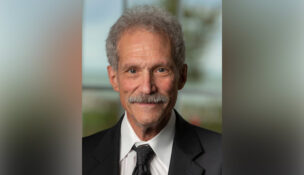Five most common faults of trial lawyers
By: Daniel Small, BridgeTower Media Newswires//January 15, 2016//
Five most common faults of trial lawyers
By: Daniel Small, BridgeTower Media Newswires//January 15, 2016//
By F. Dennis Saylor IV and Daniel I. Small
Dolan Media Newswires
One of the great privileges of being a judge is to be able to speak with jurors after a trial, to thank them and to ask them questions about what they had just witnessed.
Many jurors, with a little encouragement, will offer their views about the presentation of a case — what worked, what didn’t, and how it might have been done differently. Many lawyers, in turn, might be surprised by the general consistency of the answers.
Every trial, of course, has its own twists and turns, and every jury is different. Sometimes a case founders for its own unique set of reasons.
Still, jurors as a whole tend to have the same broad complaints over and over. Here are the five most common ones:
1. Lawyers are disorganized
Jurors generally believe that they are fulfilling an important duty, and most of them take it very seriously. They complain with some frequency about how disorganized lawyers seem to be. Lawyers who do not prepare adequately, and are therefore disorganized, are seen as disrespectful — to the judge, the jury, the parties and the process itself.
Too often, lawyers put forward rambling, discursive arguments that sound like they were made up on the spot. They fumble with their questions, or ask questions without any logical sequence. They can’t locate exhibits. They can’t locate deposition pages. With each sign of disorganization, the subliminal message the attorney sends is: “I don’t care enough to be prepared!”
Careful organization and preparation does not just improve the technical presentation of your case, it also improves your relationship with the people you are trying to persuade.
2. Lawyers waste time
The time of jurors, like all people, is precious. They can and will only pay so much attention to whatever you put before them. If you waste their time, they won’t like it, and they may well stop listening.
Too many lawyers don’t take the trouble to simplify their presentation. They ask too many questions. They talk too much. They allow too many gaps and pauses in the process.
Sometimes this is the result of over-preparation — getting so wrapped up in a case that every little detail seems important. Sometimes it’s under-preparation — not taking the time to sort through the facts to determine which details are not important. Whatever the cause, the results can seriously undermine your case.
3. Lawyers don’t show the jury the evidence
By the time the case gets to trial, you’ve lived with the documents or other pieces of evidence for years. It’s easy to forget that no one else has.
Too often, lawyers get an exhibit admitted, sometimes with great effort, but then leave it on the witness stand or counsel table, without giving the jury the chance to comprehend it.
Make sure you give the jury a real opportunity to see (or touch or hear) and understand the evidence. That may take time. In the electronic age, attorneys frequently display documents on a screen, but they often use too many and flash them up and down too quickly.
If the jury doesn’t have a chance to read and understand a document, it may as well not be in evidence at all.
4. Lawyers confuse the jury
Attorneys are sometimes surprised by questions from a deliberating jury that show confusion over basic facts or issues. Generally, that’s the lawyer’s fault, not the jury’s.
It’s your job to make sure that your presentation is clear and simple. Lawyers often put on too much evidence, on too many topics, with too much legalese or jargon. They bury the jury in unnecessary detail. They go for quantity, not quality.
In fact, the trial lawyer’s challenge is just the opposite: to reduce clutter, and to find the best ways to make the presentation of the evidence as clear and simple as possible.
5. Lawyers don’t explain the evidence to the jury
It’s not enough to just get evidence admitted; you have to show what is it, what it means, and how it fits into the story. Some lawyers seem pleased with themselves (or maybe just relieved) to get everything admitted, and don’t use charts or other visual aids to help explain it. The pieces of the puzzle have to be put together, or they won’t have any impact.
Prosecuting a money-laundering trial, Dan Small made a simple blowup chart showing how a pot of money was broken up into various checks and then recombined into a single account. It made his point dramatically clear. What’s more, the image of the money being broken up and later recombined became the visual reminder of the case’s general “web of deceit” theme.
Of course, the details are usually important, too. It’s not enough to get the broader issues right. A lawyer can easily lose a case for a technical reason that has nothing to do with juror impatience or confusion.
Nonetheless, trial lawyers need to keep in mind what they’re trying to accomplish and whom they’re trying to persuade. Lift your eyes up from the piles of paper stacked on your table, and consider your audience carefully. Respect their time, recognize their needs, help them understand the case, and try to make yourself an object of their respect.
Most importantly, keep your case as clear, simple and organized as you possibly can.
Judge F. Dennis Saylor IV sits on the U.S. District Court in Boston. Before his appointment to the bench, he was a federal prosecutor and an attorney in private practice. He teaches trial advocacy at Boston University School of Law. Daniel I. Small is a partner in the Boston and Miami offices of Holland & Knight. He is a former federal prosecutor and teaches CLE programs across the country. He can be contacted at [email protected].
Legal News
- State Bar leaders remain deeply divided over special purpose trust
- Former Wisconsin college chancellor fired over porn career is fighting to keep his faculty post
- Pecker says he pledged to be Trump campaign’s ‘eyes and ears’ during 2016 race
- A conservative quest to limit diversity programs gains momentum in states
- Wisconsin prison inmate pleads not guilty to killing cellmate
- Waukesha man sentenced to 30 years for Sex Trafficking
- 12-year-old shot in Milwaukee Wednesday with ‘serious injuries’
- Milwaukee man convicted of laundering proceeds of business email compromise fraud schemes
- Giuliani, Meadows among 18 indicted in Arizona fake electors case
- Some State Bar diversity participants walk away from program
- Wisconsin court issues arrest warrant ‘in error’ for Minocqua Brewing owner
- Iranian nationals charged cyber campaign targeting U.S. Companies
WLJ People
- Power 30 Personal Injury Attorneys – Russell Nicolet
- Power 30 Personal Injury Attorneys – Benjamin Nicolet
- Power 30 Personal Injury Attorneys – Dustin T. Woehl
- Power 30 Personal Injury Attorneys – Katherine Metzger
- Power 30 Personal Injury Attorneys – Joseph Ryan
- Power 30 Personal Injury Attorneys – James M. Ryan
- Power 30 Personal Injury Attorneys – Dana Wachs
- Power 30 Personal Injury Attorneys – Mark L. Thomsen
- Power 30 Personal Injury Attorneys – Matthew Lein
- Power 30 Personal Injury Attorneys – Jeffrey A. Pitman
- Power 30 Personal Injury Attorneys – William Pemberton
- Power 30 Personal Injury Attorneys – Howard S. Sicula











